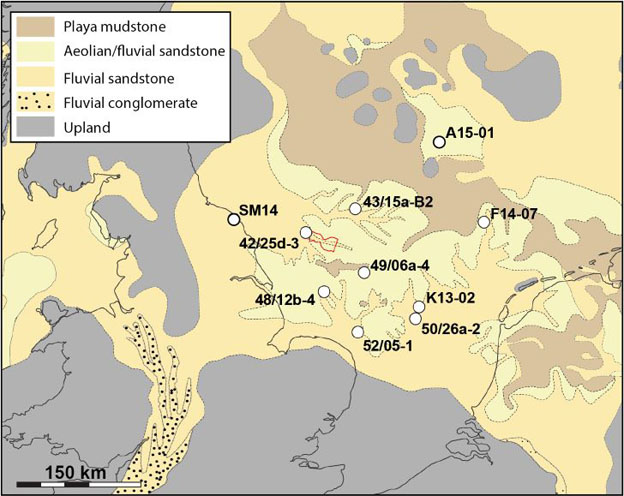CASP this week announced the release of another report: “A Heavy Mineral Provenance Study of the Bunter Sandstone Formation in the Southern North Sea.”
This project and its resultant report presents heavy mineral provenance data from the Early Triassic Bunter Sandstone Formation. Together with the other projects that comprise the CASP Bunter Sandstone Storage Complex Thematic Research, this project forms part of the first regional scale appraisal of the Bunter Sandstone Formation across the Southern North Sea.
This study focuses on a unique onshore well from the northeast of England, which provides a fully-cored section through the entire ~270 m thickness of the Bunter Sandstone Formation, as well as nine wells from across the UK and Dutch sectors of the Southern North Sea. The analytical dataset comprises, 147 conventional heavy mineral analyses that are supplemented by a subset of 30 single grain geochronological and geochemical analyses (apatite U-Pb and trace elements, zircon U-Pb, garnet major elements, and tourmaline major elements).

Distribution of sampled wells across the Southern North Sea on an Early Triassic palaeogeographic map adapted from McKie and Williams (2009).
Key Highlights:
Analytical Dataset: The dataset includes 147 conventional heavy mineral analyses, supplemented by a subset of 30 single-grain geochronological and geochemical analyses, comprising:
- Apatite U-Pb and trace elements
- Zircon U-Pb
- Garnet major elements
- Tourmaline major elements
The results offer critical data to enhance the prediction of reservoir quality and refine the geological framework of the Bunter Sandstone Formation, aiding in the assessment of its potential as a CO2 storage reservoir.
Data delivery:
The data and interpretations are delivered as a 147-page physical and electronic report, accompanied by a comprehensive GIS.
Full details l KeyFacts Energy Industry Directory: CASP
 KEYFACT Energy
KEYFACT Energy